Abstract
Influenza A and influenza B viruses were adapted to growth at 25°C. When given to volunteer subjects, the viruses were attenuated but remained infective and antigenic. The minimum immunizing dose of an egg-adapted virus appeared to be 105.0 EID50. Cloning by plaque selection at 25°C gave seed cultures of relatively low infectivity titres. These titres were increased when necessary by passage at 33°C. No reversion to virulence was observed.
Viruses attenuated in the United Kingdom and the USA were compared in volunteer trials with vaccine strains that had already been used in the USSR for mass immunization. Results were broadly similar. Currently available methods of attenuation and work with temperature-sensitive mutants are reviewed.
Full text
PDF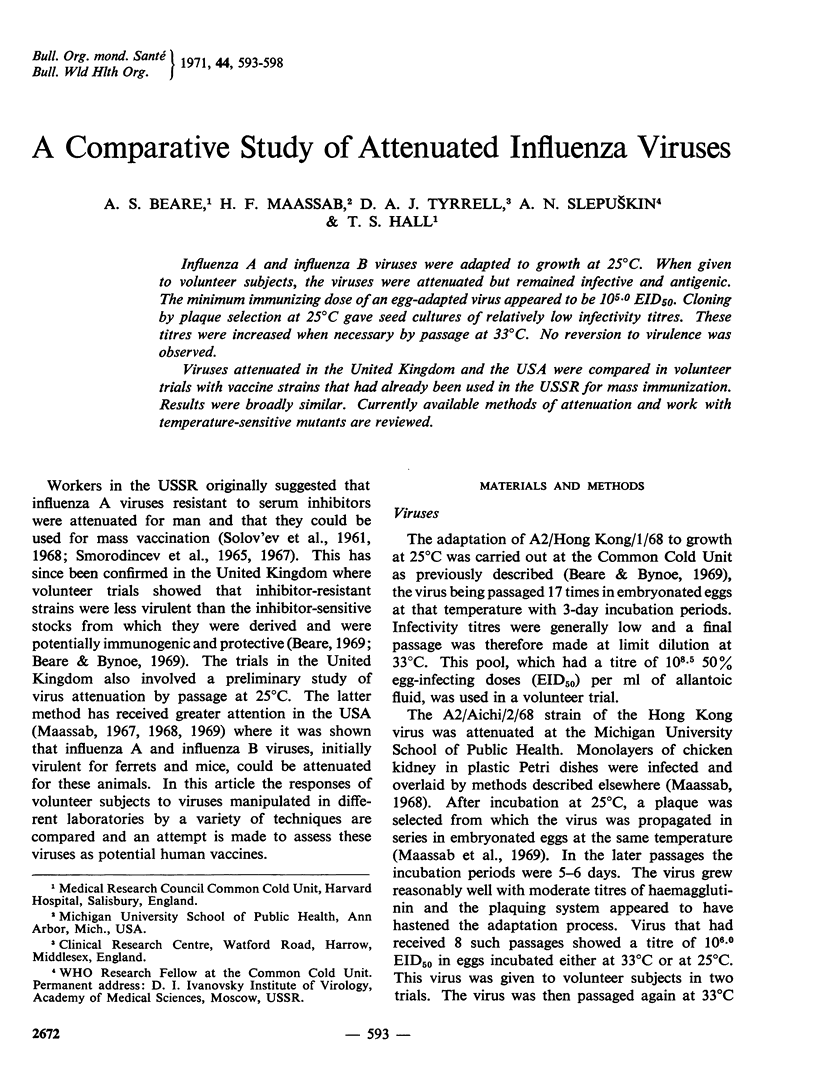
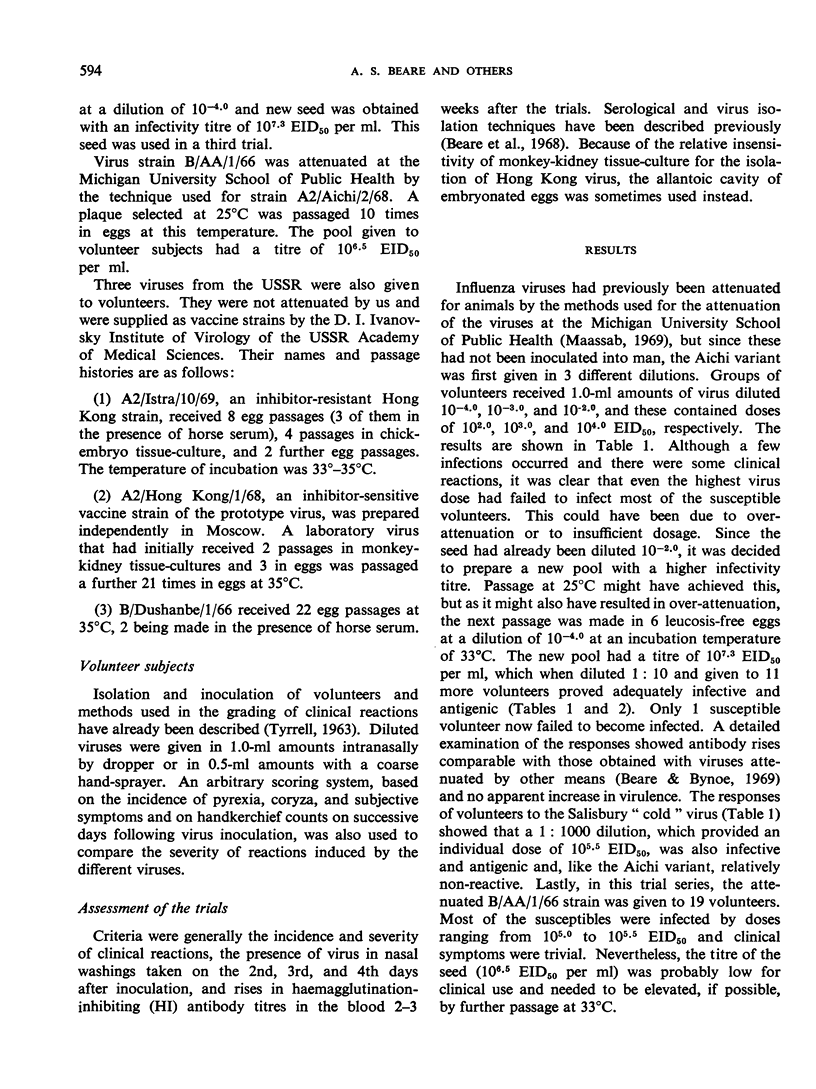
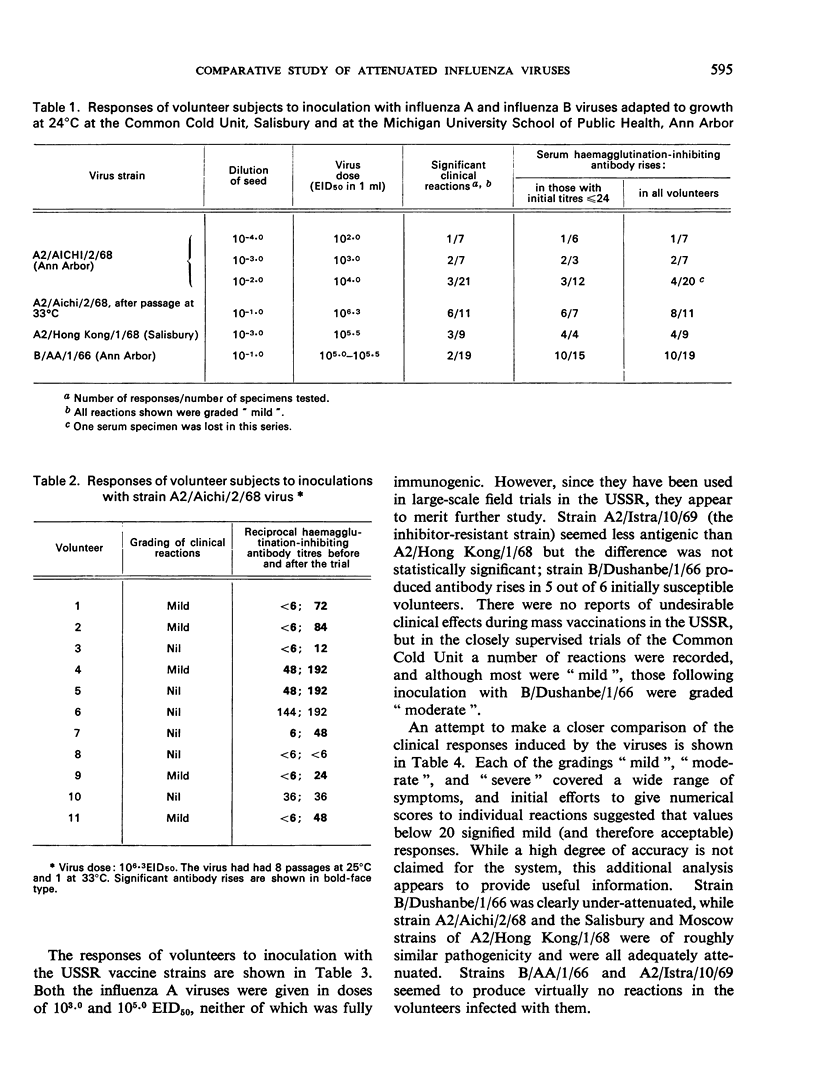
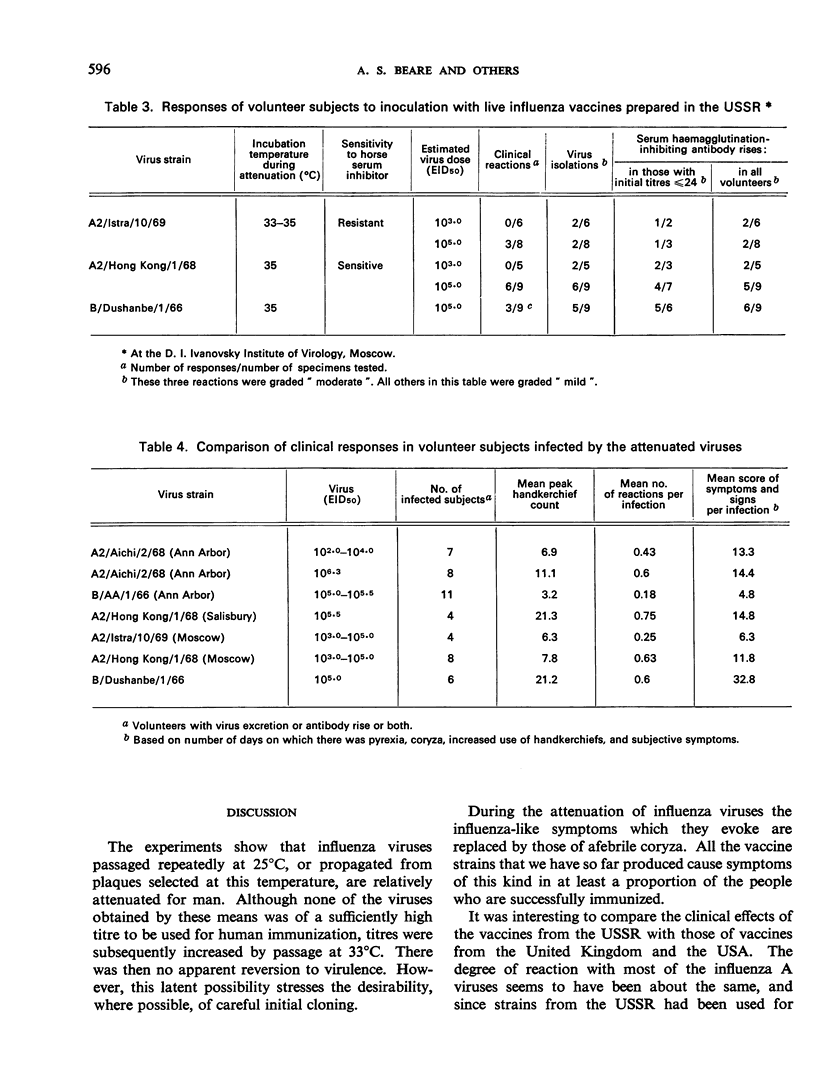
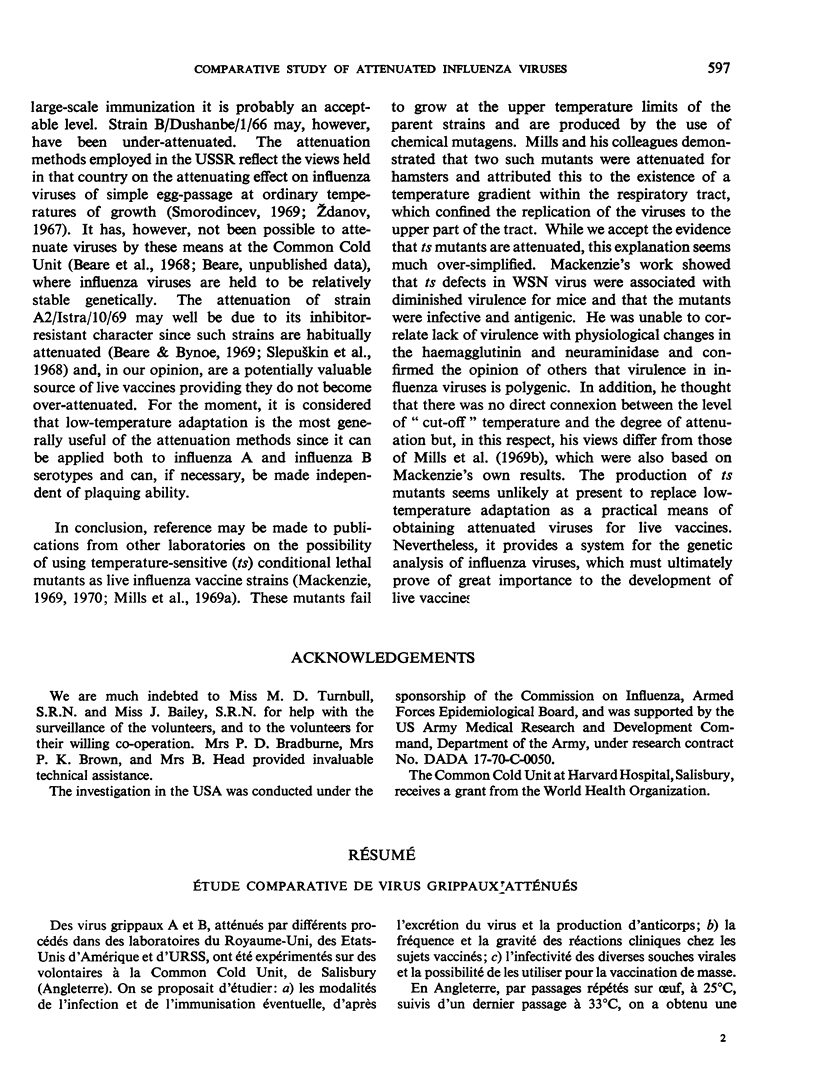
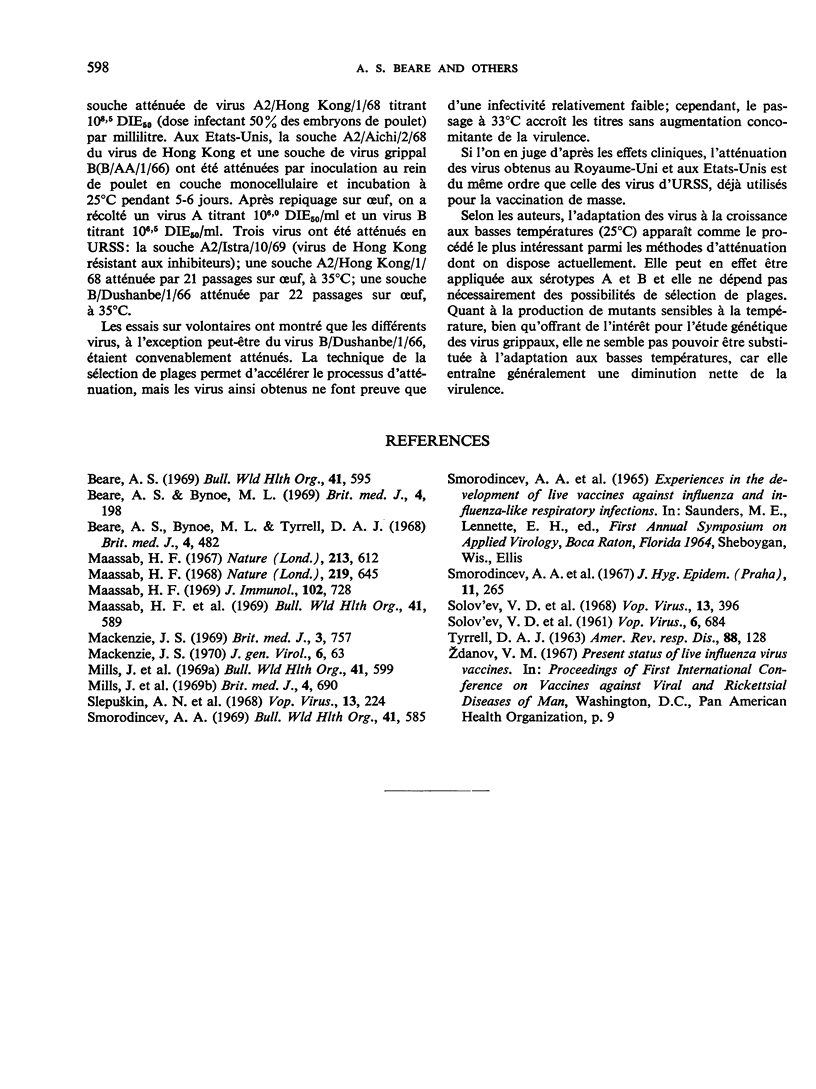
Selected References
These references are in PubMed. This may not be the complete list of references from this article.
- Beare A. S., Bynoe M. L. Attenuation of human influenza A viruses. Br Med J. 1969 Oct 25;4(5677):198–201. doi: 10.1136/bmj.4.5677.198. [DOI] [PMC free article] [PubMed] [Google Scholar]
- Beare A. S., Bynoe M. L., Tyrrell D. A. Investigetion into the attenuation of influenza viruses by serial passage. Br Med J. 1968 Nov 23;4(5629):482–484. doi: 10.1136/bmj.4.5629.482. [DOI] [PMC free article] [PubMed] [Google Scholar]
- Beare A. S. Laboratory characteristics of attenuated influenza viruses. Bull World Health Organ. 1969;41(3):595–598. [PMC free article] [PubMed] [Google Scholar]
- Maassab H. F. Adaptation and growth characteristics of influenza virus at 25 degrees c. Nature. 1967 Feb 11;213(5076):612–614. doi: 10.1038/213612a0. [DOI] [PubMed] [Google Scholar]
- Maassab H. F. Biologic and immunologic characteristics of cold-adapted influenza virus. J Immunol. 1969 Mar;102(3):728–732. [PubMed] [Google Scholar]
- Maassab H. F. Plaque formation of influenza virus at 25 degrees C. Nature. 1968 Aug 10;219(5154):645–646. doi: 10.1038/219645a0. [DOI] [PubMed] [Google Scholar]
- Mackenzie J. S. Isolation of temperature-sensitive mutants and the construction of a preliminary genetic map for influenza virus. J Gen Virol. 1970 Jan;6(1):63–75. doi: 10.1099/0022-1317-6-1-63. [DOI] [PubMed] [Google Scholar]
- Mackenzie J. S. Virulence of temperature-sensitive mutants of influenza virus. Br Med J. 1969 Sep 27;3(5673):757–758. doi: 10.1136/bmj.3.5673.757. [DOI] [PMC free article] [PubMed] [Google Scholar]
- Mills J., Chanock R. M., Alling D. W. Mutants of influenza virus. Br Med J. 1969 Dec 13;4(5684):690–690. doi: 10.1136/bmj.4.5684.690-a. [DOI] [PMC free article] [PubMed] [Google Scholar]
- SOLOV'EV V. D., ORLOVA T. G., PORUBEL' L. A., VASIL'EVA I. N. [Study on genetic characteristics of vaccinal strains of influenza viruses type A2]. Vopr Virusol. 1961 Nov-Dec;6:684–691. [PubMed] [Google Scholar]
- Smorodincev A. A. The efficacy of live influenza vaccines. Bull World Health Organ. 1969;41(3):585–588. [PMC free article] [PubMed] [Google Scholar]


